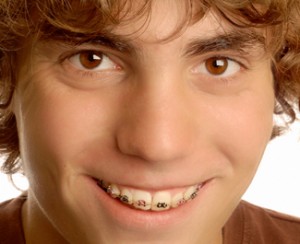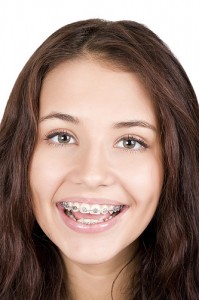Caring for Your Smile During Orthodontic Treatment
April 1st, 2015
Straightening your teeth can have a world of benefits. It can give you more confidence in your smile, make it easier to keep your teeth clean, and improve the alignment of your front and back teeth so that chewing is easier. However, since orthodontic treatment often takes over a year, it is important to know how to care for your smile during that time.
Maintain Good Dental Hygiene
Maintaining your oral hygiene regimen is even more important now
that you have braces. Brush your teeth twice a day using a fluoride-containing toothpaste, and floss at least once a day. To make flossing in between your wires and brackets easier, ask us about a floss threader. Use a mouthwash daily to kill germs.

Eat a Mouth-Healthy Diet
Limit sweets and sugar-sweetened beverages, such as soft drinks and fruit drinks, to avoid having sugar on your teeth and increasing your risk of tooth decay. You’ll also need to avoid certain foods because they are too gummy, hard, or likely to get stuck in or damage your braces.
Orthodontic treatment or not, eating sticky, sugary foods is never healthy because they increase your risk of developing tooth decay. Instead, opt for nutritious choices such as fruits and vegetables, dairy products, and lean proteins.
Orthodontic treatment will give you a better smile and the benefits that come with it. Make sure you take full advantage of your treatment by keeping your mouth clean so that your smile is white and healthy when your braces come off!














 Website Powered by Sesame 24-7™
Website Powered by Sesame 24-7™